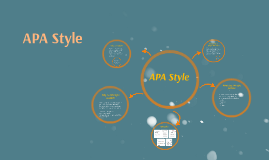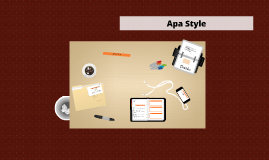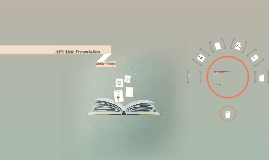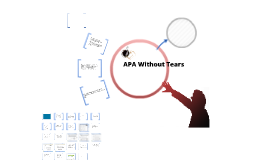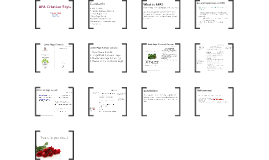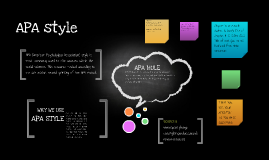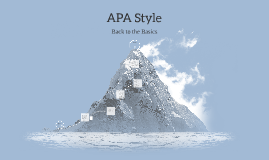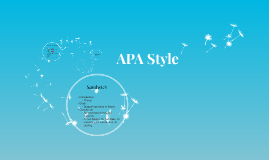APA PowerPoint
Transcript: First, purchase a copy of the Publication Manual of the American Psychological Association. Then, read it. The manual is not just a reference; it is a style manual with advice on how to write in your discipline. Of course, the book is used as a reference because there are too many rules to keep in one’s head. The more you use the reference, the quicker it will be to find the information you need. Don’t get frustrated when the index is of no use whatsoever. Again, the more familiar you are with the manual, the more you will save yourself time and frustration. APA style is commonly used in science-related fields It is a parenthetical system of citations In-text citations can be cross-referenced to the references page. References www.apastyle.org Publication Manual of the American Psychological Association Members of a discipline share research, so that community of scholars needs an agreed upon set of rules—a style or format—to make the scholarship standardized and accessible to other scholars of that field. Basic Strategies for Mastering APA Style Using APA style properly adds to your credibility as a writer and researcher in your field. Personal communications are not recoverable, so do not include them in the reference list. Cite them only in-text, and use a date. J.J. Jones (personal communication, June 10, 2010). APA tables do not use vertical lines. (See page 130 in the Sixth edition.) APA Without Tears Using APA style properly adds to your credibility as a writer and researcher in your field. Synthesize your sources a number of ways: “The author-date method of citation requires that the surname of the author. . .and the year of publication be inserted in the text at the appropriate point: DOIs DOI stands for digital object identifier. They function as links to referenced content. This way readers can find your sources easily Not all journals use this method as of yet, but most do. One work by six or more authors uses the Latin for “and others” “et al.” on the first reference. Jones et al. (2010)... This is the only Latin abbreviation that can be used outside parentheses. When a secondary source is used, give the secondary source in the reference list; in text, name the original work and give a citation for the secondary source. Jone’s study (as cited in Johnson, 2010). If the date of a source is unknown, use n.d. in the parenthetical citation. If a source does not have page numbers, cite the paragraph and use the abbreviation “para.” (Jones, 2010, para. 7). The paper should be double-spaced throughout and have one-inch margins. Members of a discipline share research, so that community of scholars needs an agreed upon set of rules—a style or format—to make the scholarship standardized and accessible to other scholars of that field. The Basics: A note about plagiarism: “Researchers do not claim the words and ideas of another as their own; they give credit where credit is due (APA Ethics Code of Standard 8.11, Plagiarism). Quotation marks should be used to indicate the exact words of another. Each time you paraphrase another author (i.e., summarize a passage or rearrange the order of a sentence and change some of the words), you need to credit the source in the text” (APA,2009, p.15). Kessler (2003) found that among epidemiological samples Early onset results in a more persistent and severe course (Kessler, 2003). In 2003, Kessler’s study of epidemiological samples showed that” (APA, 2009, p.174). APA Without Tears Do read chapter 3, “Writing Clearly and Concisely” carefully. Tips on writing style Tips on clarity, precision, and concision Organizational structure to develop your argument Strategies to improve writing style First, purchase a copy of the Publication Manual of the American Psychological Association. Then, read it. The manual is not just a reference; it is a style manual with advice on how to write in your discipline. Ten Tips for Better APA Style On the cover page, in the words “Running head,” the “h” is not capitalized. Begin page numbers on the title page, which is page 1. If “and” is inside the parenthetical use the &, otherwise spell out “and.”(Jones & Johnson, 2010). Jones and Johnson (2010) found. . . When you cite a source in text, you need three pieces of information. the author’s last name the year the information was published a page or paragraph number— depending on whether it’s a quote or a close paraphrase






